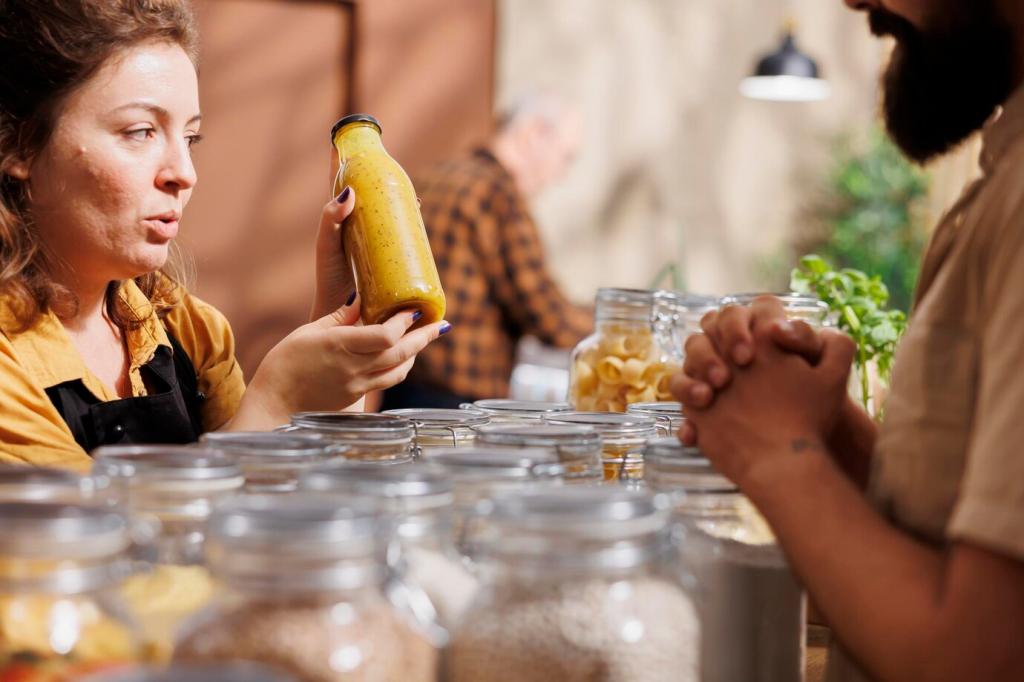
Essential Equipment for Homebrewing Craft Beer
Chosen theme: Essential Equipment for Homebrewing Craft Beer. Start your first batch with confidence by understanding the tools that truly matter. We’ll demystify the core gear, share hard-earned lessons, and help you build a reliable setup that protects flavor, boosts consistency, and keeps your brew day fun. Subscribe and join the conversation about your must-have tools.

Measuring What Matters: Hydrometer, Thermometer, and pH Control
A hydrometer reads original and final gravity to estimate alcohol and fermentation progress. A refractometer needs smaller samples and speeds readings on brew day. Correct for temperature and, for refractometers, adjust post-fermentation with a calculator. Tell us which tool you prefer and why it’s earned your trust.
Measuring What Matters: Hydrometer, Thermometer, and pH Control
Mash enzymes are picky; yeast are pickier. Use a fast, accurate digital thermometer to nail strike water, mash rests, and pitching temperatures. Calibrate periodically with ice water and a gentle boil test. Have a close call saved by a good thermometer? Share the story to help new brewers avoid heartbreak.
Measuring What Matters: Hydrometer, Thermometer, and pH Control
Target a mash pH around 5.2–5.6 for crisp conversion and balanced taste. Strips are simple, while a calibrated pH meter offers precision. Rinse probes with distilled water and store properly for longevity. Post your favorite pH tweaks—gypsum, lactic acid, or acidulated malt—to guide our next deep dive.
Cleanliness Is Flavor: Sanitizers and Cleaners You Can Trust
Oxygen-based cleaners like PBW lift krausen rings and break down sticky hop resins. Give contact time, use warm water, and rinse thoroughly. Dedicated brushes for carboys, tubing, and spigots prevent hidden buildup. What cleaning routine keeps your gear spotless? Share it so others can replicate your success.
From Wort to Package: Siphons, Bottling Gear, and Caps

An auto-siphon starts flow cleanly without mouth contact, while silicone tubing tolerates heat and resists kinks. Keep tubing lengths manageable to reduce oxygen exposure and sanitize everything. Share your best trick for crystal-clear transfers—tilting the fermenter, cold crashing, or a racking cane clip.
Chilling and Aeration: Getting Fermentation Off to a Strong Start
01
Immersion chillers are simple, affordable, and easy to clean, while counterflow and plate chillers cool faster with less water. Whichever you choose, circulate gently and pre-sanitize. Slow chilling can raise DMS and haze. Which chiller won your heart and why? Share your timing and water-saving tips.
02
No chiller yet? An ice bath in a sink or tub works if you stir the wort gently and rotate frozen bottles. Pre-chill your top-up water. Protect against contamination with a tight lid. Tell us your best emergency chill method and how it affected hop aroma or haze.
03
Vigorous shaking, sanitized whisks, aquarium pumps with filters, or pure O2 with a diffusion stone all boost oxygen. Aim for strong aeration before pitching. Over-oxygenating finished beer is harmful, so time it right. What aeration approach gave you your cleanest fermentation? Drop your data points and impressions.
Temperature Control: The Silent Guardian of Flavor
Controllers and Probes
A plug-and-play temperature controller paired with a heating pad or fridge turns guesswork into precision. Tape the probe to the fermenter with insulation for accurate readings. Tight control reduces fusels and esters. Do you tape, thermowell, or sleeve your probe? Share what gave you the most stable results.
Fermentation Chambers and DIY Solutions
A converted fridge or chest freezer becomes a reliable chamber with shelving for multiple fermenters. On a budget, try a swamp cooler with rotating frozen bottles. Consistency beats extremes. Post a photo of your chamber build or your best low-cost workaround to inspire the next brewer.
Seasonal Strategies and Yeast Choice
Match yeast to ambient conditions—Kveik thrives warm, while lagers demand chill. Seasonal planning reduces stress on equipment. Keep fermentation ranges posted near your setup. What strain behaves best in your climate? Let us know and we’ll compare notes in an upcoming community round-up.
Grain to Glass: Mills, Mashing Gear, and Bag Brewing
A two-roller mill with adjustable gaps lets you fine-tune husk integrity and extraction. Too fine invites stuck sparges; too coarse leaves sugars behind. Sieve tests can help. What gap setting delivers your best conversion? Share the numbers so others can benchmark their crush.
Grain to Glass: Mills, Mashing Gear, and Bag Brewing
Coolers with stainless braid or false bottoms hold heat and simplify lautering. Insulate to maintain stable rests. A reliable thermometer port helps track steps. What’s your preferred mash tun build, and how much heat loss do you see over sixty minutes? Help others plan their insulation.


